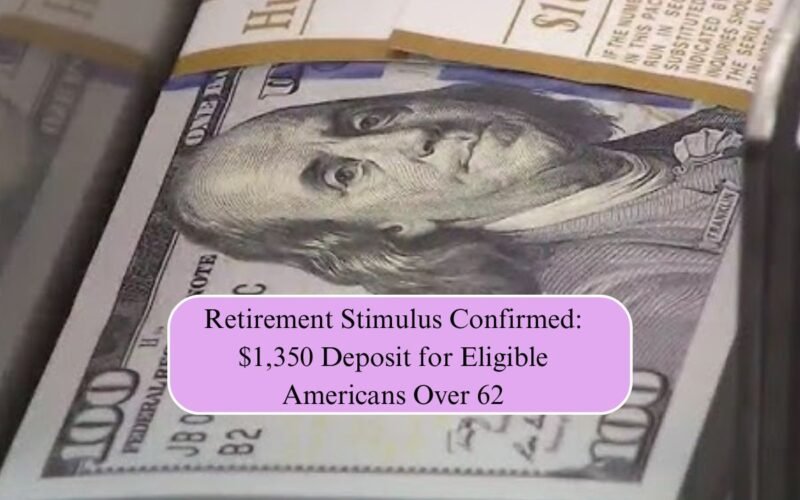A new round of financial relief is on the way for millions of older Americans. The government has confirmed a $1,350 retirement stimulus deposit for eligible citizens aged 62 and older, designed to provide extra financial support amid rising costs of living, inflation, and healthcare expenses. This direct deposit will be automatically sent to qualifying retirees and low-income seniors starting this month, offering much-needed assistance for those living on fixed incomes.
Why the $1,350 Retirement Stimulus Is Being Issued
The newly confirmed $1,350 payment is part of the ongoing effort by federal agencies to help retirees and senior citizens maintain financial stability. As inflation continues to impact everyday expenses, this relief payment will help eligible recipients cover essential costs like groceries, rent, and medical bills. The payment is being distributed through the Social Security Administration (SSA) and Internal Revenue Service (IRS) systems to ensure fast and accurate delivery to qualified individuals.
Who Qualifies for the $1,350 Deposit
Eligibility for the $1,350 retirement stimulus depends on several key factors, including age, benefit type, and income level. Americans who meet the following criteria are likely to qualify:
- Must be 62 years or older at the time of payment distribution
- Currently receiving Social Security retirement, SSI (Supplemental Security Income), or SSDI (Social Security Disability Insurance) benefits
- Annual income falls within federal eligibility limits for senior benefit programs
- Have a valid Social Security number and are U.S. citizens or permanent residents
The SSA and IRS will automatically identify and process payments for eligible recipients, meaning most retirees do not need to apply or take any additional steps.
When the $1,350 Payments Will Arrive
The $1,350 direct deposits are expected to begin rolling out this month, following the SSA’s regular payment schedule based on the recipient’s date of birth. Seniors who receive benefits through direct deposit can expect to see the payment appear in their bank accounts first, while those relying on paper checks may experience a short delay. According to official schedules, payments will be distributed in three waves throughout the month:
- Birthdays between the 1st and 10th: Week 2 of the month
- Birthdays between the 11th and 20th: Week 3 of the month
- Birthdays between the 21st and 31st: Week 4 of the month
How to Check Your Payment Status
Eligible recipients can check their payment status by logging into their my Social Security account or reviewing their recent benefit statements. Seniors are encouraged to ensure their banking details and contact information are up to date with the SSA to avoid any delays or returned deposits. For those awaiting paper checks, it may take several additional mailing days depending on location.
Why This Stimulus Matters for Seniors
The $1,350 retirement stimulus comes at a critical time for seniors facing higher prices on essential goods and services. Many retirees rely solely on fixed monthly income, leaving little room for unexpected expenses. This one-time payment is expected to ease financial stress, improve quality of life, and provide a safety net for older Americans navigating today’s economy. It also represents the government’s continued effort to ensure that aging citizens are not left behind as inflation remains high.
FAQs
1. Who qualifies for the $1,350 retirement stimulus?
Americans aged 62 or older who receive Social Security, SSI, or SSDI benefits and meet federal income requirements are eligible for the payment.
2. Do I need to apply for the $1,350 deposit?
No, the payment will be sent automatically to qualified recipients. The SSA and IRS use existing records to identify eligible individuals.
3. When will I receive my $1,350 stimulus deposit?
Payments are being distributed this month based on the SSA’s regular schedule tied to the recipient’s birth date.
4. How will I receive the payment?
Most beneficiaries will get the payment via direct deposit. Paper checks will be mailed to those not enrolled in electronic payments.

